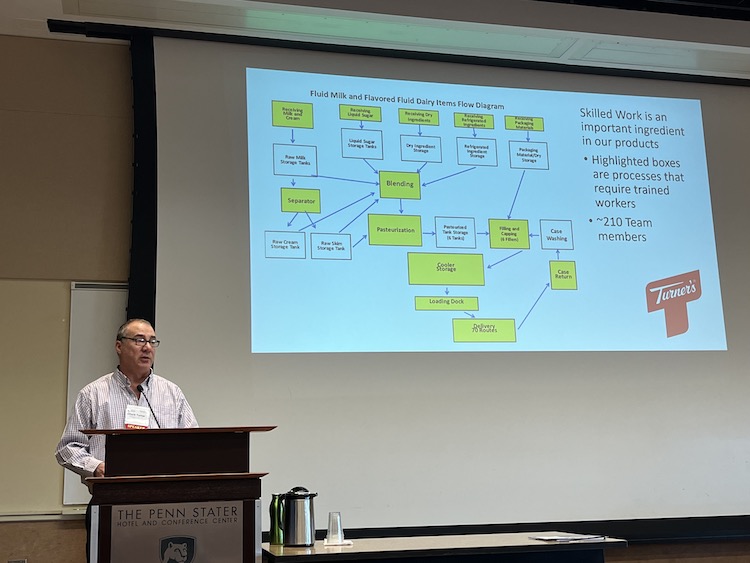
Referring to dairy processing as a supply chain is much too simplistic, believes Chuck Turner. Instead, the word the fluid milk bottler thinks best describes the complexity of these operations is “matrix.”
“We don’t sell the same milk we receive,” said the president of Turner Dairy Farms during the Pennsylvania Dairy Summit as he explained the interconnected factors that must be working properly for them to turn incoming milk around into a consumer-friendly product in a timely manner.
The Turner plant in western Pennsylvania processes 128 different dairy stock-keeping units (SKUs), which consists of 102 Class I items and 26 Class II items, Turner described. SKUs refer to different products, such as milk versus cottage cheese, as well as different varieties and package sizes. Having the right ingredients and packaging for all of those items is often one of the first challenges. For example, Turner noted that even for a simple gallon of whole milk, they must have the jug, the cap, the label, and vitamin D in addition to the milk.
Labor is a significant added dimension of their supply matrix. In the photo above, which diagrams the flow of milk at Turner’s plant, the yellow boxes indicate where skilled labor is needed. In fact, Turner described skilled work as another product they sell.
“I can have all the stuff, but if I don’t have trained labor, I don’t have a product to get to the market,” he said. In total, the plant employs about 210 people. He recognized that since the pandemic, labor has been the bottleneck in processing facilities like it has in other industries, with some plants still not back to full capacity.
Another aspect that adds complexity to their operations is sales information, or lack thereof. “We don’t know what our customers order until after we make it,” Turner said. To forecast demand and determine how much milk to buy, they look at sales from the week prior and the same time last year and make their best estimate.
Finally, Turner noted that maintaining equipment by having access to parts and the business’ cash flow also play into the matrix of their processing operations.
What are processors doing?
With all of these factors affecting each other, plants must be flexible in how they meet daily needs to continue taking and processing milk.
On the labor side, Turner pointed to the fact that in the last decade, their company has added a human resources position solely dedicated to seeking out qualified candidates and hiring them. Workforce initiatives are becoming more common among plants, he said. Further, Turner is slowly looking into and adopting more automation.
Maintaining more inventory as well as back-up and alternative supplies is something the company is also focusing on. Contingency planning has become more top of mind, Turner stressed. As a whole, he said the industry has room to improve on designing flexibility into their operations. And though it may be a complex web of needs and steps, Turner’s belief is that mutual trust between all levels of suppliers and keeping the system local has helped them get it all done.








